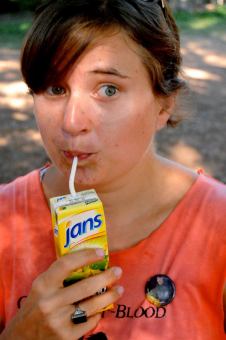The operation reiterated that the victimization of vulnerable youth can and does happen here in the United States in cities as varied as San Francisco, Atlanta, Detroit, and Birmingham. Ron Hosko, the assistant director of the FBI's criminal investigations division, acknowledged that some of these youth were directly recruited out of foster care facilities, pinpointing a critical point of entry and exit within the child welfare system. San Francisco saw the largest number of recovered victims from the raid of any one city; the FBI was able to find 12 victims of trafficking and arrest 17 pimps. These numbers happen to coincide with staggering statistics in California that connect foster care youth and emancipated youth with homelessness. For instance, each year in California, nearly 2,300 youth age out of foster care [1] and 65% do so without a place to live [2]. Of emancipated youth in the Bay Area, it is estimated that up to 44 percent have experienced homelessness [3].
On a national scale, one in eight endangered runaways reported to the National Center for Missing & Exploited Children in 2012 were likely to be sex trafficking victims [4]. Of the children reported missing to NCMEC who are also likely to be child sex trafficking victims, 60 percent were in foster care or group homes when they ran away [5].The vulnerabilities and characteristics common to runaway and homeless youth often place them both within the child welfare system and in the direct line of sight for traffickers, making them easy prey in a lucrative business.
Interestingly, victim assistance counselors are working to place the recovered teenagers in foster care or group homes after the sting as well, presumably given that many of them have no families to return to or safe places to call home. This reality calls for a differential response within child welfare protocol, a crisis intervention plan of action, and more comprehensive solutions to engaging homeless youth to ensure that they do not flee back into a rabbit hole of revictimization.
IOFA's Illinois Childright project spearheaded development of a statewide child trafficking response with the Illinois Department of Children and Family Services this year; the resulting blueprint and designation of a human trafficking coordinator within DCFS has paved the way for new protocol and policies to guide investigations, a human trafficking indicator in the SACWIS person management screen, and the training of hundreds of frontline workers.
Now, as IOFA replicates this work in five counties across the state of New York, the common thread is crystal clear. Safe Harbor laws in states like New York, Illinois, and Connecticut transfer jurisdiction of children who are arrested for prostitution from the criminal system to the child protection system, saving youth from the categorical implications of ‘criminal’ and the life outcomes that stem from them. But legal statutes must be reinforced with operational frameworks and protocols within child welfare agencies to ensure that vulnerable youth are met with a comprehensive response no matter their point of entry into the system. It is only then that we can say that our youth are being afforded the basic rights they deserve, no matter the unfortunate hand life has dealt them.
-Summar Ghias
Program Coordinator
[1] Child Welfare Services Stakeholders Group. (2003). CWS Redesign:
The Future of California’s Child Welfare Services. Sacramento:
California Department of Social Services.
[2] Issue Brief, Ensuring Access to Healthy Young Adults Program for Transitioning Youth, citing a California Department of Social
Services 2002 Study: Report of the Housing Needs of Emancipated Foster/Probation Youth; California Department of Social Services. (2002) Report on the Survey of the Housing Needs of Emancipated Foster/Probation Youth. Independent Living Program Policy Unit, Child and Youth Permanency Branch.
[3] http://www.healthiersf.org/fys/Statistics/docs/HEY%20Stats%20Sheet%20Health%20Homelessness%202009.pdf








